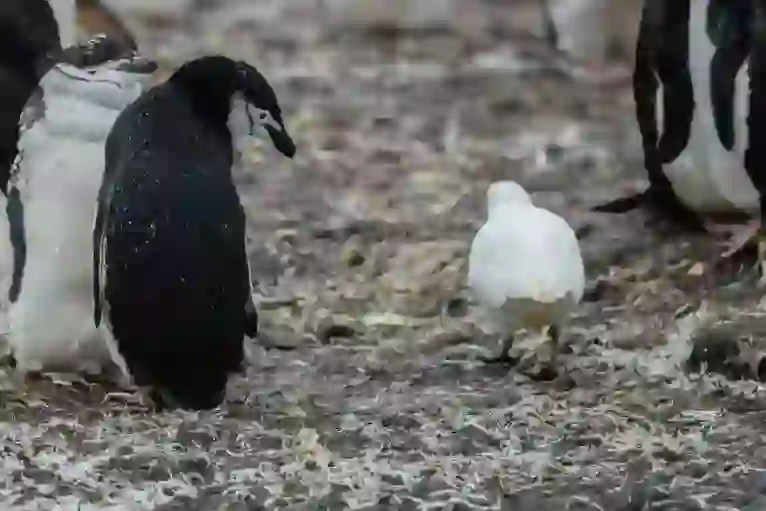
Chinstrap Penguin
Chinstrap Penguin
Chinstrap Penguin
Have you heard of the Chinstrap Penguin? In fact, this name refers to the Hige Penguin in Japan! The Chinstrap Penguin is said to have one of the largest populations among penguins worldwide, competing for the top two spots. However, it is surprising that the number of Chinstrap Penguins bred in Japan is relatively small, so many people may be hearing this name for the first time. Let’s take a peek at some interesting and funny secrets about the Chinstrap Penguin!
Chinstrap Penguin Basic Infomation
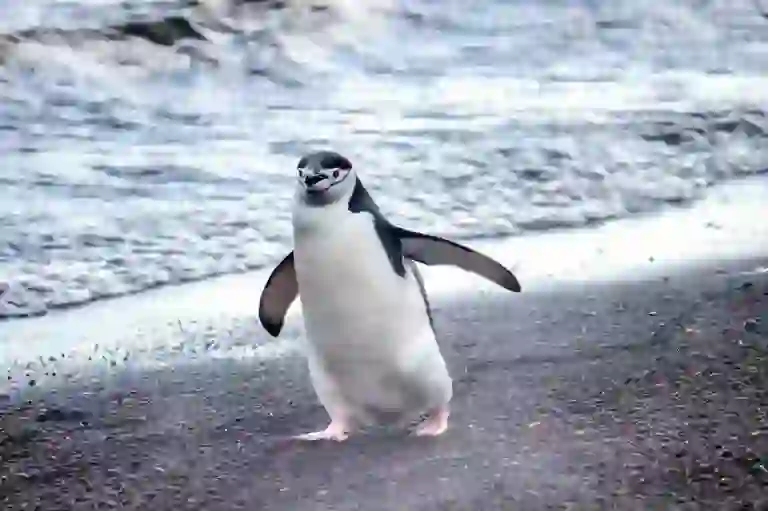
Aves-Sphenisciformes-Spheniscidae-Adelie penguin genus.
72-76cm.
Male: 4.9kg Female: 4.7kg (Breeding time.)
Male: 3.5kg Female: 3.4kg (After spawning.) ※For adult birds living on King George Island.
Male : 19.2cm Female: 18.7cm. ※For adult birds living on Deception Island.
Male: 4.9cm Female: 4.6cm. ※For adult birds living on Deception Island.
Unknown.
The most distinctive feature of the Chinstrap Penguin is the black line resembling a beard around its chin. Therefore, it is often called the “Bearded Penguin” in English and Spanish, and the “Mustache Penguin” in Japan. However, this page will refer to it as the Chinstrap Penguin.
The belly side is white, and the back side is covered with black feathers. The legs are pink. The eyes look sharp, and they can be a little scary when viewed from the side. However, when viewed from the front, the sharp eyes look like small black sesame seeds, giving them an adorable appearance. The Chinstrap Penguin’s charm lies in the fact that you can enjoy various expressions depending on the angle. It is difficult to distinguish between males and females because they look exactly the same, but males are generally larger.
Chinstrap Penguins breed from November to January by landing on islands in the sub-Antarctic sea and creating groups called “rookeries.” They make rookeries on steep coastal slopes, beaches, cliff edges, and capes. They use mainly small stones for their nests. They may also mix in animal feathers or bones that have fallen if they are available. Afterward, they mate with each other if they like each other.
Chinstrap Penguins form strong bonds with their partners, and once they become a couple, the probability of breeding with the same partner in the following year is very high. Females lay two eggs between November and December, and males usually warm the eggs first, then switch with females after about 5 to 10 days. Even though they switch, both males and females continue to warm the eggs without eating or drinking, so their weight decreases after laying eggs. The total incubation period is 33 to 35 days, and after this period, chicks are born safely.
For about 20 to 30 days after birth, the parents take turns feeding the chicks while wrapping them in their stomachs. When they grow up a little, the chicks are placed in groups called “creches” for shared care. During this period, parents go to the sea to look for food and feed them every day. Then, after about 50 to 60 days from birth, they grow to be about the same size as their parents and are ready to leave the nest.
The body of the chick covered with gray down gradually changes feathers, and eventually, black lines like those of adults appear. However, at this time, children do not seem to have clear lines yet. When they grow up, they leave that place once, but it is said that they often return for molting several years later.
Chinstrap Penguin Q&A

Where does the name Chinstrap Penguin come from?
The term Chinstrap refers to the helmet strap of a hat. In other words, it was named after the black line around the chin area that resembles the strap of a hat or helmet. By the way, in Japan, it is called the Mustache Penguin because it is thought to resemble a mustache.
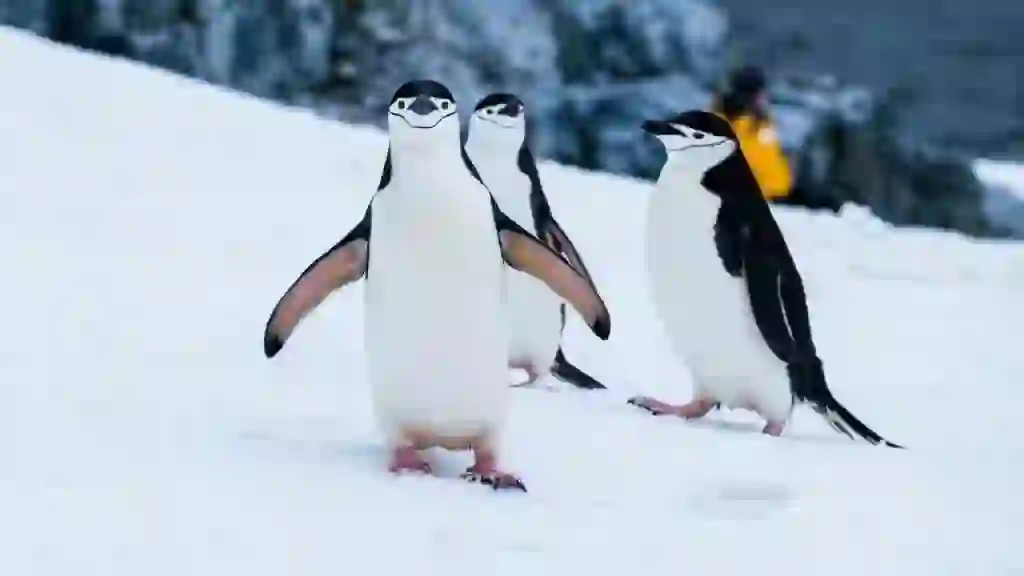
Why does Chinstrap Penguin live there?
Chinstrap Penguins breed and raise their young on various islands, including those in the sub-Antarctic and Antarctic Peninsula. Some of these islands include Bouvet Island, the South Sandwich Islands, South Georgia Island, the South Orkney Islands, the South Shetland Islands, Peter I Island, Scott Island, and the Balleny Islands.
They are also found from the north to the Amber Islands on the Antarctic Peninsula. In addition, they have been sighted along the coast of Antarctica, in the northern ice zone, and in Adélie Land to the southeast. Chinstrap Penguins have also been observed on Macquarie Island in Tasmania and Australia.
While it is possible that some sightings may be due to individuals being carried by currents, one theory suggests that a large population of Antarctic krill resides beneath the ice around the Antarctic Peninsula and islands. This abundance of food makes these areas ideal for Chinstrap Penguins to thrive.

What does Chinstrap Penguin eat?
Chinstrap Penguins dive into the sea and eat small fish, Antarctic krill, and crustaceans. In the case of chicks, they receive digested Antarctic krill from their parents by mouth.
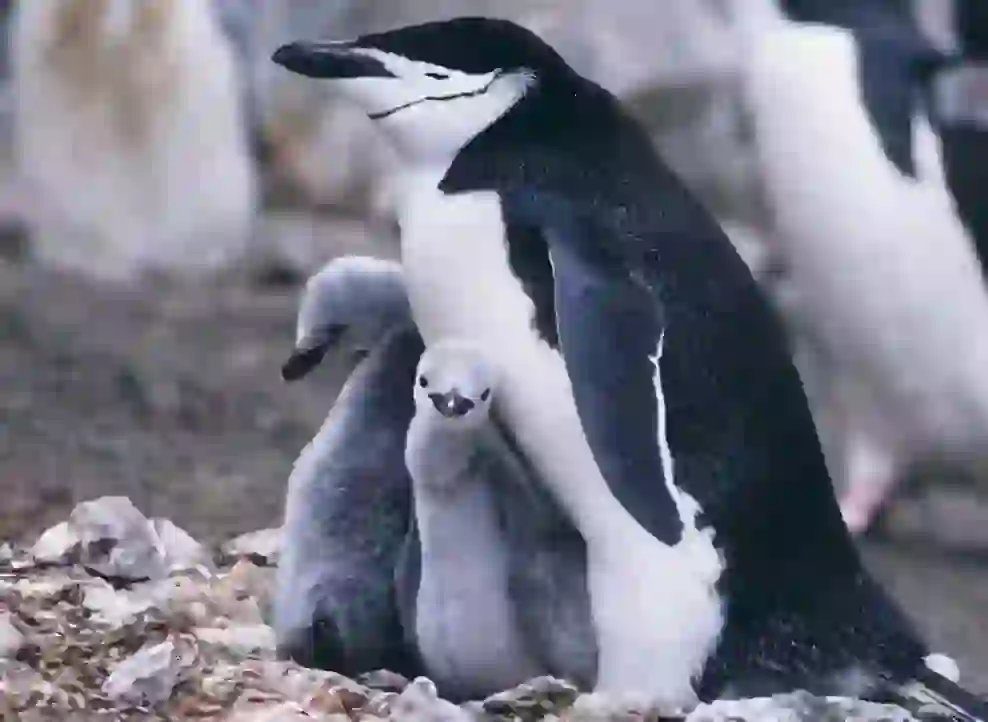
Is it true that Chinstrap Penguin is said to represent Antarctica?
When you think of penguins living in Antarctica, many people might imagine the Emperor Penguin with its beautiful yellow markings on its white belly. So why is the Chinstrap Penguin considered the representative of Antarctica? The secret lies in its scientific name.
The scientific name of the Chinstrap Penguin is “Pygoscelis antarcticus,” and “antarcticus” means “of Antarctica,” and only the Chinstrap Penguin is listed. It is said to be the representative of Antarctica because it is the only species with “antarcticus” in its scientific name.
However, in reality, this secret seems to be simply because the Chinstrap Penguin was the first penguin discovered in Antarctica. Therefore, it does not seem to be called the representative of Antarctica because of any special reason.
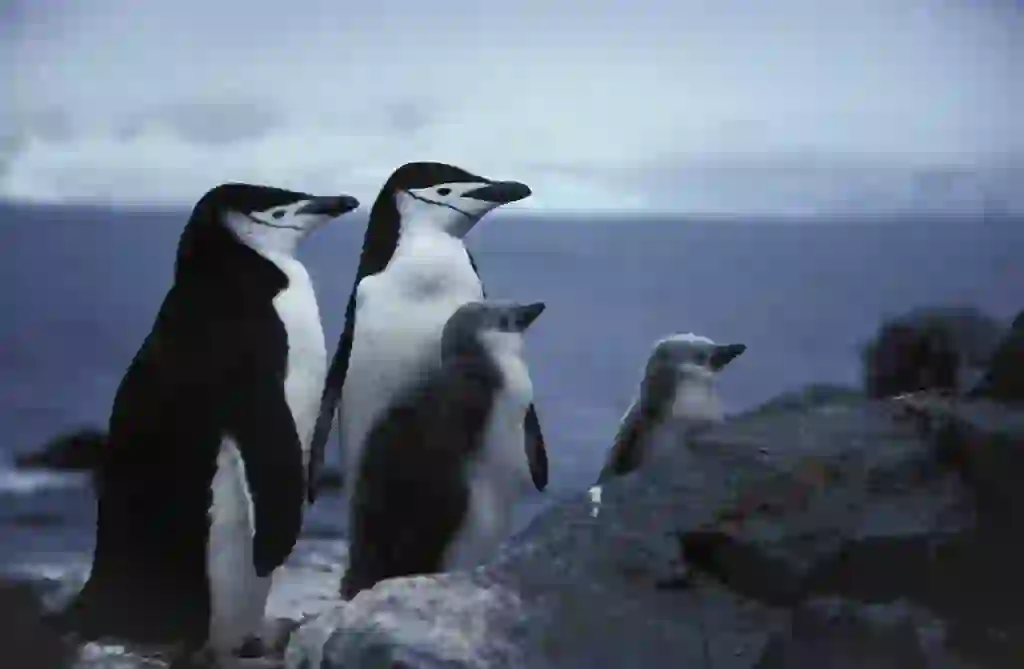
Is it true that Chinstrap Penguin coexists with other penguins?
In conclusion, it’s true. On King George Island, one of the South Shetland Islands, not only Chinstrap Penguins but also Gentoo Penguins and Adélie Penguins, which belong to the same genus, inhabit the island.
Therefore, it is said that Chinstrap Penguins sometimes get mixed up in Adélie Penguin colonies. However, this raises a question. Don’t these three species of penguins compete for food when they live in the same place? Actually, penguins seem to be aware of this issue. They control their feeding habits by changing the location where each penguin feeds and adjusting their breeding seasons to avoid competition for food.
For example, Gentoo Penguins mainly catch fish along the coast, while Adélie Penguins and Chinstrap Penguins catch Antarctic krill further offshore.
Although Adélie Penguins and Chinstrap Penguins eat the same food, they adjust their breeding seasons so that Adélie Penguins lay eggs from October to November and Chinstrap Penguins lay eggs from November to December. This way, even if other penguins live on the same island, they can coexist peacefully.
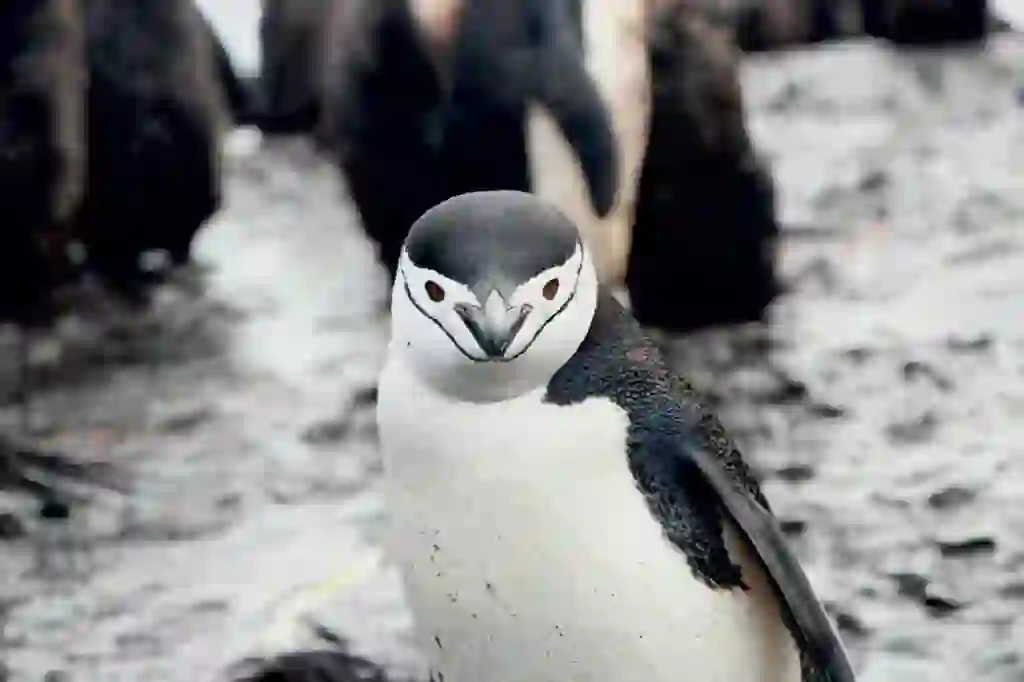
Learn more about Chinstrap Penguin's personality!
Chinstrap Penguins are known to be the most quarrelsome and bold among the Adélie Penguins. As a result, they sometimes fight with their fellow penguins. Moreover, instead of running away when other penguins or animals enter their territory, they tend to jump at opponents larger than themselves.
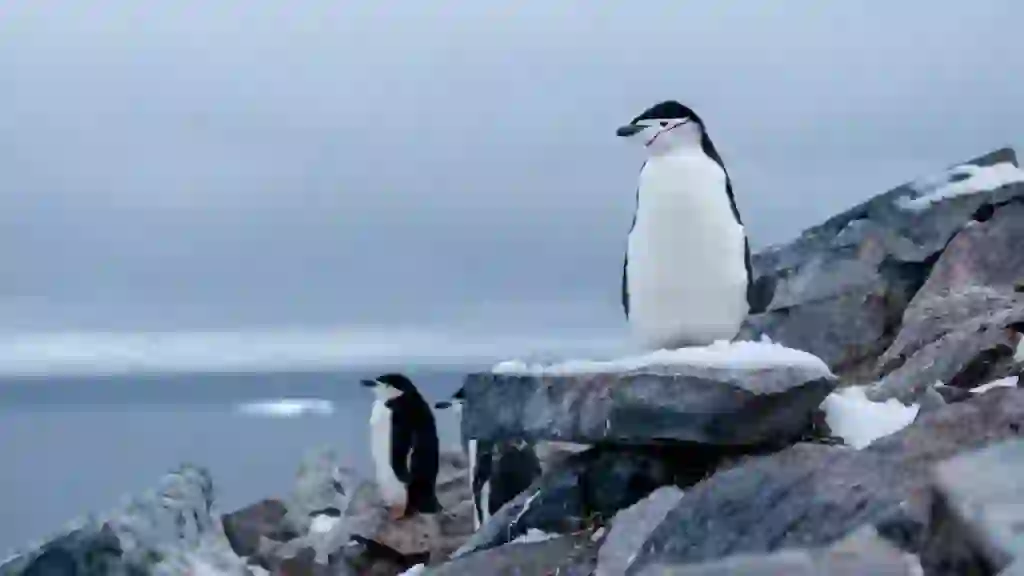
Is there a place where I can see Chinstrap Penguin?
As of November 2021, there are three places in Japan where Chinstrap Penguins are bred: Nagoya Port Aquarium in Nagoya City, Aichi Prefecture, Adventure World in Shirahama Town, Wakayama Prefecture, and Nagasaki Penguin Aquarium in Nagasaki City, Nagasaki Prefecture. For those who want to see Chinstrap Penguins in the wild, joining an Antarctic cruise is an option. However, please note that the travel expenses can be quite high. You can apply through a travel agency. I hope this information is helpful!
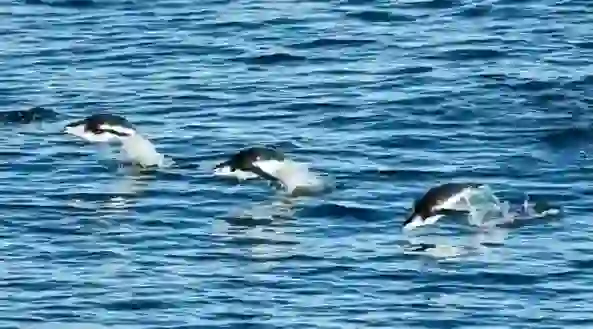
Does Chinstrap Penguin have natural enemies?
Chinstrap Penguins have natural enemies such as Orcas and Leopard Seals that lurk in the sea. Additionally, the South Polar Skua, a bird, targets their eggs and chicks. However, humans might be the biggest threat to Chinstrap Penguins.
Currently, the International Union for Conservation of Nature (IUCN) has designated Chinstrap Penguins as “Least Concern” in terms of endangerment. However, in recent years, the average temperature on the Antarctic Peninsula has risen due to global warming, and Chinstrap Penguins are said to be affected by this.
Penguins are generally resilient to cold but sensitive to heat. Therefore, when the average temperature in November, their breeding season, rises, it can lead to a significant loss of energy.
Moreover, it is said that it rarely rains on the Antarctic Peninsula. However, there was a year when it rained continuously. As a result, cotton-like chicks without water-repellent properties became soaked and died from freezing.
As you can see, climate change has caused unexpected phenomena in various parts of the world. This is an opportunity for us to think together about building a better relationship between humans and penguins.

What is the lifespan of the Chinstrap Penguin?
The lifespan of Chinstrap Penguins, which live in a harsh natural environment, is up to 18 years at most.

Would you like to become a part of the 'Animalbook.jp'?
Turn your knowledge into Q&A and share it with the world. ※Publication will be activated after purchase. Let's share information together!
Chinstrap Penguin Type of List

- Chinstrap Penguin
Information
Congratulations! You are the first commenter!

Create Your Favorite List!
Chinstrap Penguin
Save the animals you love! Build your own list to quickly revisit your favorites later.

Would you like to leave a comment?
※Please note: This is for the purchase of rights to post comments within the article.
Find Your Favorites!
Our shop offers a unique and attractive selection of goods themed around various animals.
Chinstrap Penguin References

- ペンギンガイドブック 著者:藤原幸一
- ペンギンライブラリー ホシザキ株式会社 https://www.hoshizaki.co.jp/penguin_island/penguin/
- Akiko KATO’s page http://docyaounde.free.fr/akatoHP/
- 南極動物図鑑 http://polaris.nipr.ac.jp/~penguin/oogataHP/zukan/zukan.htm
- Pew Charitable Trusts 世界のペンギンの保護 https://www.pewtrusts.org/-/media/assets/2015/05/penguinoverviewfinaljp.pdf
- BirdLife International Tokyo もっとも絶滅リスクの高いペンギンはどの種でしょうか? https://tokyo.birdlife.org/archives/world/13126
- 宇宙地球環境研究所 極地50のなぜ https://www.isee.nagoya-u.ac.jp/50naze/kyokuchi/38.html
Chinstrap Penguin Introduction of media used

出典:https://www.pexels.com/ja-jp/photo/2753515/

出典:https://unsplash.com/photos/3Xd5j9-drDA

出典:https://pixabay.com/images/id-79844/

出典:https://unsplash.com/photos/Tc_Z3BQ5Smk

出典:https://unsplash.com/photos/8PxCm4HsPX8

出典:https://unsplash.com/photos/ZZyK8GjFJ4Q
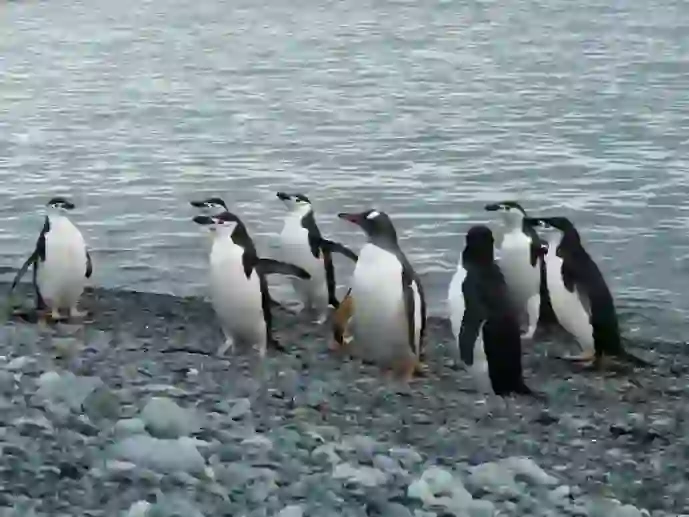
出典:https://commons.wikimedia.org/wiki/File:Gentoo-chinstrap.JPG
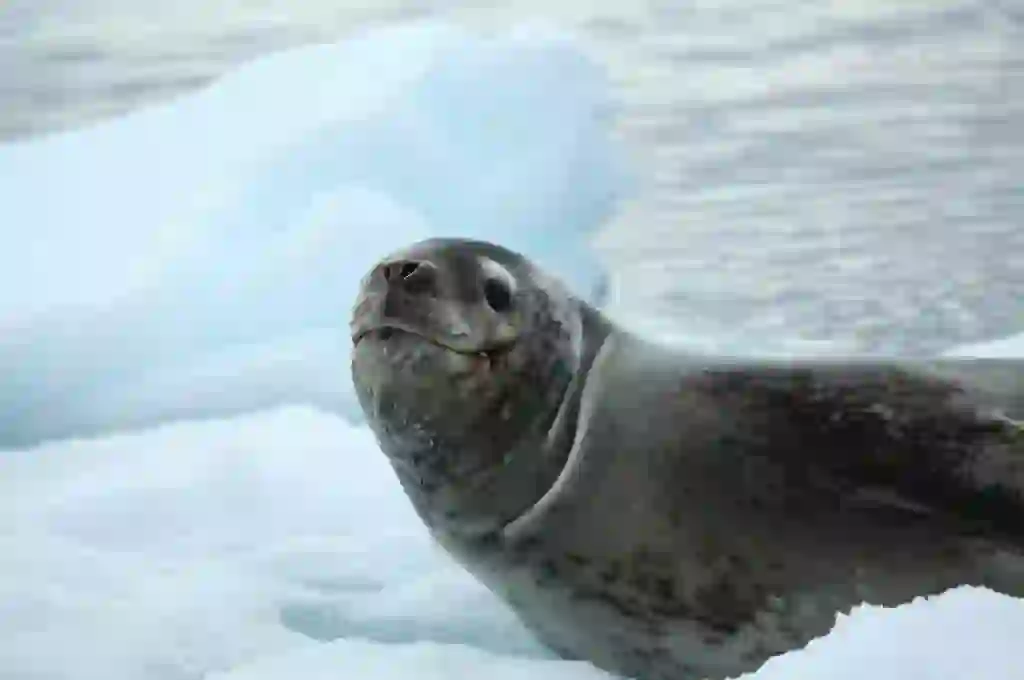
enemy
出典:https://commons.wikimedia.org/wiki/File:Leopard Seal in Pléneau Bay, Antarctica (6059293250).jpg
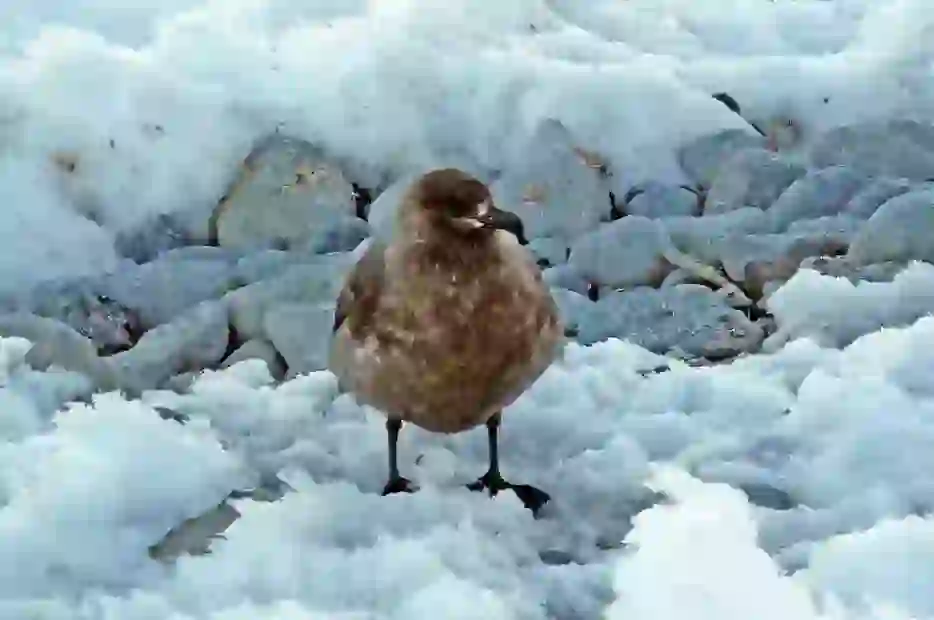
enemy
出典:https://commons.wikimedia.org/wiki/File:Págalo polar.jpg

出典:https://www.pexels.com/ja-jp/photo/689777/

Help Enrich Our Animalbook.jp with Your Media!
We are constantly looking to expand and enrich our Animalbook.jp with amazing photos and videos of animals. If you have any media that you'd like to share, please contribute and help us showcase the beauty and diversity of the animal kingdom. Your submissions will be credited and featured in our encyclopedia, reaching a wide audience of animal lovers.
















